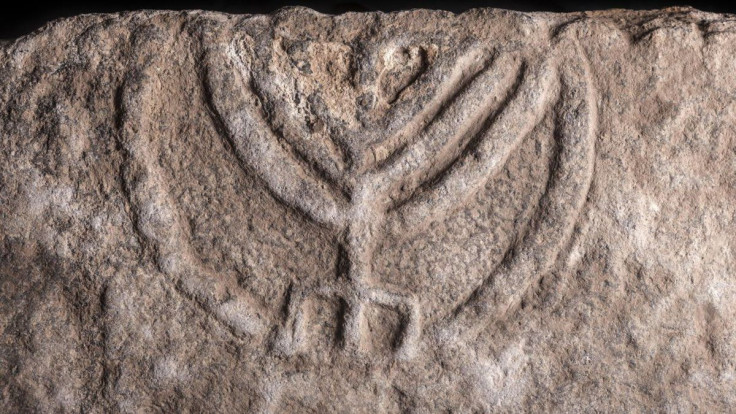Ancient Stone From Jewish Tomb Shows Complicated Religious History Of Israel

Archaeologists in Israel uncovered a tomb’s stone door with a menorah carved into it that could tell them more about the religious history of the region.
The artifact was dug up in the northern city Tiberias, on the coast of the Sea of Galilee, while workers were clearing away debris to build a sports center, Haaretz reported. The basalt rock door spent time sealing a tomb about 2,000 years ago before it was turned into a mosque pillar a few hundred years afterward. That mosque was destroyed in an earthquake and the tomb door was once again converted, into a stair in a sugar factory during the time of the Crusades.
That building met a fate similar to the mosque’s, when it collapsed in the 13th century, Fox News reported.
The stone’s multiple uses through eras when different religions dominated Israel are part of what make the find so intriguing, as is its rare design.
Of the tomb seals archaeologists have found in the area, this is the only one that had a menorah design on the front, according to Haaretz. The menorah, which has seven branches on it, is linked to the ancient Second Temple in Jerusalem.
2000-year-old tomb door with menorah found in Northern Israel. https://t.co/jcJalHAok8 pic.twitter.com/JpUiQSRqUH
Archaeologists found the door in 2010 but only recently announced its discovery. The timing of the announcement coincides with the Jewish holiday Hanukkah, during which people light candles on a menorah for each night of the eight-day festival.
The tomb door’s use as a step in a Christian-era sugar factory raises questions: “The fact that this is the one chosen for a top step is also challenging for our modern mind: Was this a positive or negative appropriation of the menorah?” the Hebrew University of Jerusalem’s Katya Cytryn-Silverman told Fox News. “Were they stepping on purpose? Did the room serve a special function? Were the inhabitants … actually aware of its importance? Was this just a beautiful ornamented piece? While these questions are still hard to answer, the very use [of the door] at this place, and our eventual exposure, revived its long trajectory, going from Jewish hands, to Muslim, and then to Christian owners.”
Because of its long history, workers dig up historical artifacts in Israel often. Those include ruins from the lost Roman city Julias on the Sea of Galilee where Jesus Christ gathered his apostles Peter, Andrew and Philip. The city Julias was previously a fishing village called Bethsaida.
Archaeologists have also found new sections while digging in the tunnels underneath the Western Wall in Jerusalem’s Old City.
© Copyright IBTimes 2024. All rights reserved.





















